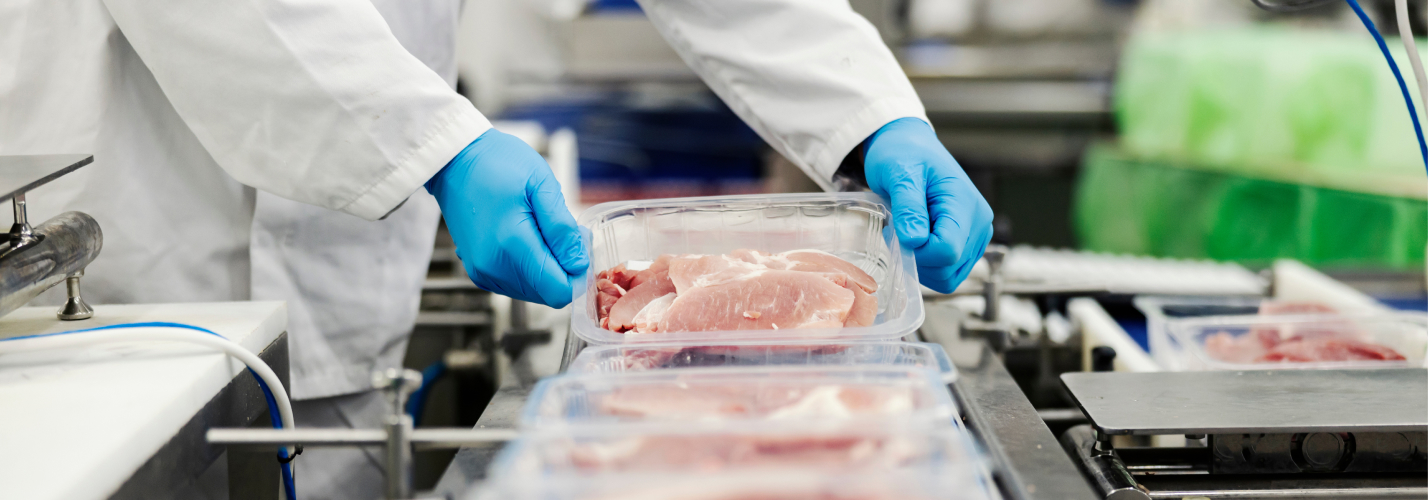Processing and Packaging
Food process manufacturing involves the handling of raw materials at the first stage of production. It is at this stage where harmful microorganisms and pathogens can rapidly multiply and cross contaminate a number of finished products. Accurate temperature monitoring of the production environment, the raw materials and the finished products can ensure that microbial growth is restricted.
For example, fresh meat within slaughterhouses needs to be kept at a specific temperature for both quality control and safety, requiring consistent measurement.
A storage temperature of between 0-4°C is ideal, while deep-frozen meat should maintain a temperature of around -18°C or below. Thawing meat should have a surrounding temperature of 4°C or below for longevity and safe consumption.
Salted meat, like ham, should similarly be stored at around 2-4°C before the product is rinsed and dried at around 10-15°C. Once this process is complete, the meat can be matured at a predefined temperature for the specific product. For sausages, the mixed ingredients are cooked at a specific temperature before they are cooled to between 5-15°C
Temperature control in food manufacturing has to be maintained to a specified standard set by regulatory bodies, in order to mitigate public health concerns. In the UK, the FSA are responsible for food safety and hygiene.
The food safety regulations set out by the FSA include robust temperature checks, ongoing monitoring and accurate record keeping. Which means, in order to adhere to the regulations, food manufacturers must maintain a record to demonstrate all ingredients, raw materials, finished products and packaging is produced and stored safely.
With technology becoming more cost-effective, dependable, and user-friendly, remote temperature monitoring offers food manufacturing companies the chance to deliver outstanding customer experiences and enhance profitability. Digital temperature monitoring presents a solution by enabling real-time temperature monitoring and prompt alerts for abnormal conditions.
Monitoring Solution Example:
Real-time monitoring systems integrated into packaging lines ensure consistency. Once producers have real time temperature readings from across the various stages, the process manufacturing cycle can be optimised.
This means deviations can be prevented, potential issues can be addressed early on, readings can be automated, and records can be archived to adhere with regulations. This not only forms a precise and consistent picture of temperatures at each stage of production, but it also ensures that if temperatures do deviate, they’re captured as early as possible to reduce the impact on a food products safety, shelf life and quality.
Above all, these individual temperature monitoring efforts then ensure that food products are produced at high volume, and of the same high quality each time.
Next up, transportation: the critical link in the cold chain






